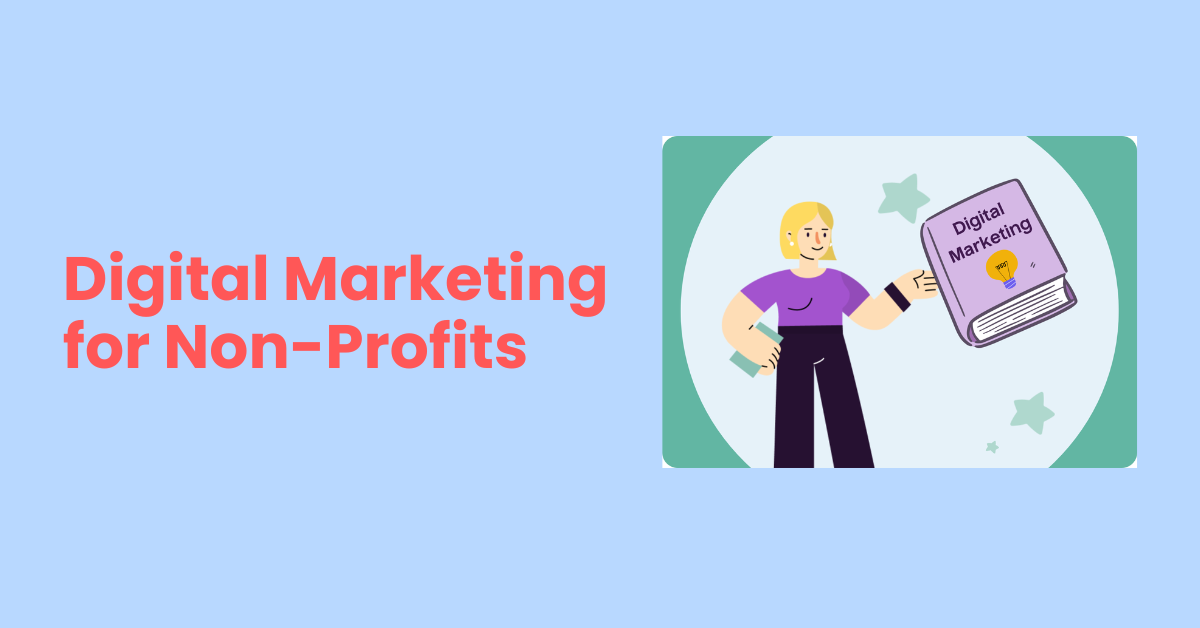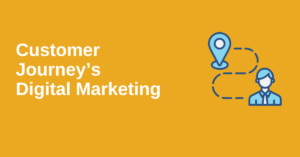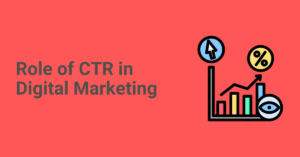Digital marketing has transformed how organizations, including non-profits, engage with their audiences. In today’s fast-paced world, non-profits must leverage digital platforms to spread their message, garner support, and drive donations. Digital marketing for non-profits is more than just an online presence—it’s about creating meaningful interactions, building trust, and expanding the reach to generate a more significant impact.
Why Digital Marketing Matters for Non-Profits-
The digital landscape offers non-profits unprecedented opportunities to reach and engage with audiences globally. Whether it’s raising awareness for a cause, increasing volunteer participation, or collecting donations, a well-executed digital marketing strategy can boost a non-profit’s efforts significantly.
Benefits of Digital Marketing for Non-Profits:
1. Cost-Effective: Digital platforms offer many free or low-cost tools, making digital marketing accessible even for non-profits with limited budgets.
2. Wider Reach: Non-profits can target global audiences, spreading awareness and attracting supporters from around the world.
3. Real-Time Engagement: Digital marketing enables organizations to engage with their audience in real time, fostering a more personal connection.
4. Measurable Results: Data and analytics tools allow non-profits to track their marketing performance and make adjustments to improve their outreach strategies.
Key Digital Marketing Strategies for Non-Profits:
1. Social Media Marketing
Social media platforms like Facebook, Instagram, Twitter, and LinkedIn are crucial for non-profits to engage with their communities, raise awareness, and promote fundraising campaigns. With billions of users on these platforms, non-profits can share stories, showcase their work, and humanize their causes.
Best Practices:
– Engage with Visual Content: Share compelling images, videos, and infographics that tell the story of your organization and its impact.
– Create a Posting Schedule: Consistency is key to maintaining visibility. Plan and schedule regular updates, announcements, and stories to keep followers engaged.
– Utilize Hashtags: Popular hashtags can increase your organization’s visibility and help it connect with broader movements or causes.
2. Email Marketing
Email marketing is one of the most effective tools for non-profits to communicate directly with their donors and volunteers. A well-crafted email campaign can help build long-term relationships with supporters, keeping them informed about upcoming events, fundraising goals, and success stories.
Best Practices:
– Segment Your Audience: Personalize your email campaigns based on supporter preferences or past behavior. Tailoring messages makes them more relevant and likely to resonate.
– Craft Compelling Subject Lines: Your email’s subject line determines whether it gets opened. Make it attention-grabbing and concise.
– Include Clear Calls-to-Action (CTAs): Whether it’s to donate, volunteer, or share your message, every email should have a clear, compelling CTA.
3. Content Marketing:
Content marketing helps build trust, authority, and a deeper connection with your audience. By producing informative and engaging content, non-profits can attract potential supporters and encourage them to take action.
Types of Content:
– Blog Posts: Share updates, success stories, and informative articles about your cause to establish your organization as a thought leader.
– Videos: Create emotional, story-driven videos that showcase your mission and the people it impacts.
– Infographics: Break down complex data into digestible, visually appealing graphics to illustrate the importance of your work.
Best Practices:
– Tell Stories: People connect emotionally with stories. Share personal stories of individuals or communities that have benefited from your organization’s efforts.
– Consistency: Regularly update your blog or content channels to keep your audience engaged.
– Repurpose Content: Turn a blog post into a social media graphic or an email newsletter. This extends the life of your content and reaches different audience segments.
4. Search Engine Optimization (SEO):
SEO helps non-profits rank higher on search engines like Google, increasing their visibility. When people search for relevant keywords, they are more likely to discover your website, leading to more traffic and potential supporters.
Best Practices:
– Use Relevant Keywords: Incorporate keywords related to your mission and cause into your website and blog posts. Tools like Google Keyword Planner can help identify popular search terms.
– Optimize for Mobile: Ensure your website is mobile-friendly, as many users access content via smartphones.
– Create Quality Content: Search engines prioritize websites that offer valuable, high-quality content, so focus on creating useful resources that answer user questions.
5. Google Ad Grants:
Google offers non-profits up to $10,000 per month in free advertising through its Google Ad Grants program. Non-profits can use these ads to promote their cause, raise awareness, and drive website traffic.
Best Practices:
– Target the Right Keywords: Focus on keywords that are closely related to your mission to attract relevant traffic.
– Track Conversions: Set up tracking in Google Analytics to measure how well your ads are driving donations, sign-ups, or other key goals.
– Optimize Ads Regularly: Continuously monitor and adjust your ad campaigns to improve performance.
6. Online Fundraising:
Online fundraising platforms like GoFundMe, JustGiving, and Facebook Fundraisers allow non-profits to raise money digitally. These platforms make it easy for supporters to donate and share fundraising campaigns with their networks.
Best Practices:
– Use Peer-to-Peer Fundraising: Encourage your supporters to set up their own fundraising pages and share them with their friends and family. This increases your reach and donation potential.
– Leverage Social Proof: Show potential donors that others are supporting your cause. Testimonials, success stories, and donor acknowledgments can inspire more people to contribute.
7. Influencer Partnerships:
Collaborating with influencers or bloggers who align with your cause can help amplify your message to new audiences. Influencers have dedicated followings and can effectively advocate for your non-profit.
Best Practices:
– Identify Influencers Who Care: Find influencers who are genuinely passionate about your cause. Their enthusiasm will resonate more authentically with their followers.
– Offer Mutually Beneficial Partnerships: While influencers may be willing to promote your cause for free, offer them something in return, such as exclusive access to your organization or co-branded opportunities.
Conclusion;
Digital marketing provides non-profits with a powerful toolkit to enhance their outreach, increase donations, and deepen their impact. By strategically leveraging social media, email, content, SEO, and online fundraising, non-profits can reach new audiences, strengthen their supporter base, and ultimately further their mission. The digital space allows even small organizations to have a significant impact, so adopting these strategies is essential for success in today’s competitive non-profit landscape.




